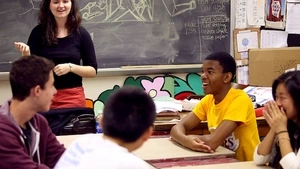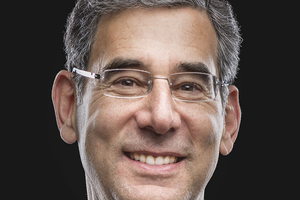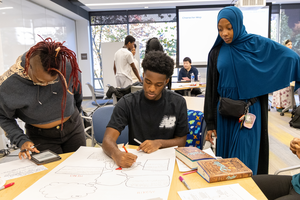Every educator has been there. A classroom discussion falls flat. Instead of watching students trade ideas across the room, the teacher ends up playing verbal ping-pong with individual students while others get bored.
Through text-based, whole classroom discussions, students can learn powerful norms and skills for collaboration such as listening, adding to others’ contributions, tactfully disagreeing, and taking turns. Discussions can deepen understanding on any subject matter.
These lessons teach life-long skills that are necessary beyond the classroom. Conversations about X-ray results, legal briefs, and profit reports all share the same basic framework as a whole classroom discussion: develop an argument, and support it with evidence.
Pam Grossman, Dean of the University of Pennsylvania Graduate School of Education and an expert in teacher professional development, offers these ideas to make your next classroom discussion more productive.
Determine your goals
Before beginning a classroom discussion, it’s important to ask yourself a few questions. What do you want students to learn about the content in this discussion? What is one discussion skill you want the students to improve on during the session? What are your students already able to do? What are they not able to do that would be a logical next step?
When you create your plan, figure out how you are going to evaluate your students’ performance. For guidance, you can look at the standards your state or school district uses or the Common Core State Standards.
Set norms
Before you kick off your discussion, tell your students what you expect. This can include general ground rules, like having students look to one another when speaking, not to you, the teacher.
This is also the time to explain the goals for the day’s discussion and give them strategies to use. Be specific and post these strategies where everyone can see them. For example, if the goal is to have students build on one another’s ideas, you could offer a rhetorical framework, such as “To build upon Mary’s idea that ____, I would like to add ___.”
Essentially, you are asking your students to incorporate a new rhetorical move. Providing them with a framework lets them see that move in action before they have to try it out. Once they are more familiar with the concept, they will make the words their own.
Discussion takes time
Don’t expect your students to become expert debaters overnight. Discussion skills take time to develop, so plan on spending a few lessons practicing the same skills. Remind students how far they have come, and congratulate them on their progress.
A tool for democracy
When you teach students how to have productive discussions, you are teaching them to be good citizens. For American democracy to function, its citizens must be able to deliberate about complex issues and make wise decisions based on those deliberations. That means listening carefully to different viewpoints and perspectives.
Students aren’t the only ones who could use a primer on civic engagement. But the classroom can be viewed as a microcosm of our larger society, where students get the opportunity to practice speaking up for their own perspectives while listening carefully to the viewpoints of others.

Subscribe to the Educator's Playbook
Get the latest release of the Educator's Playbook delivered straight to your inbox.
Media Inquiries
Penn GSE Communications is here to help reporters connect with the education experts they need.









